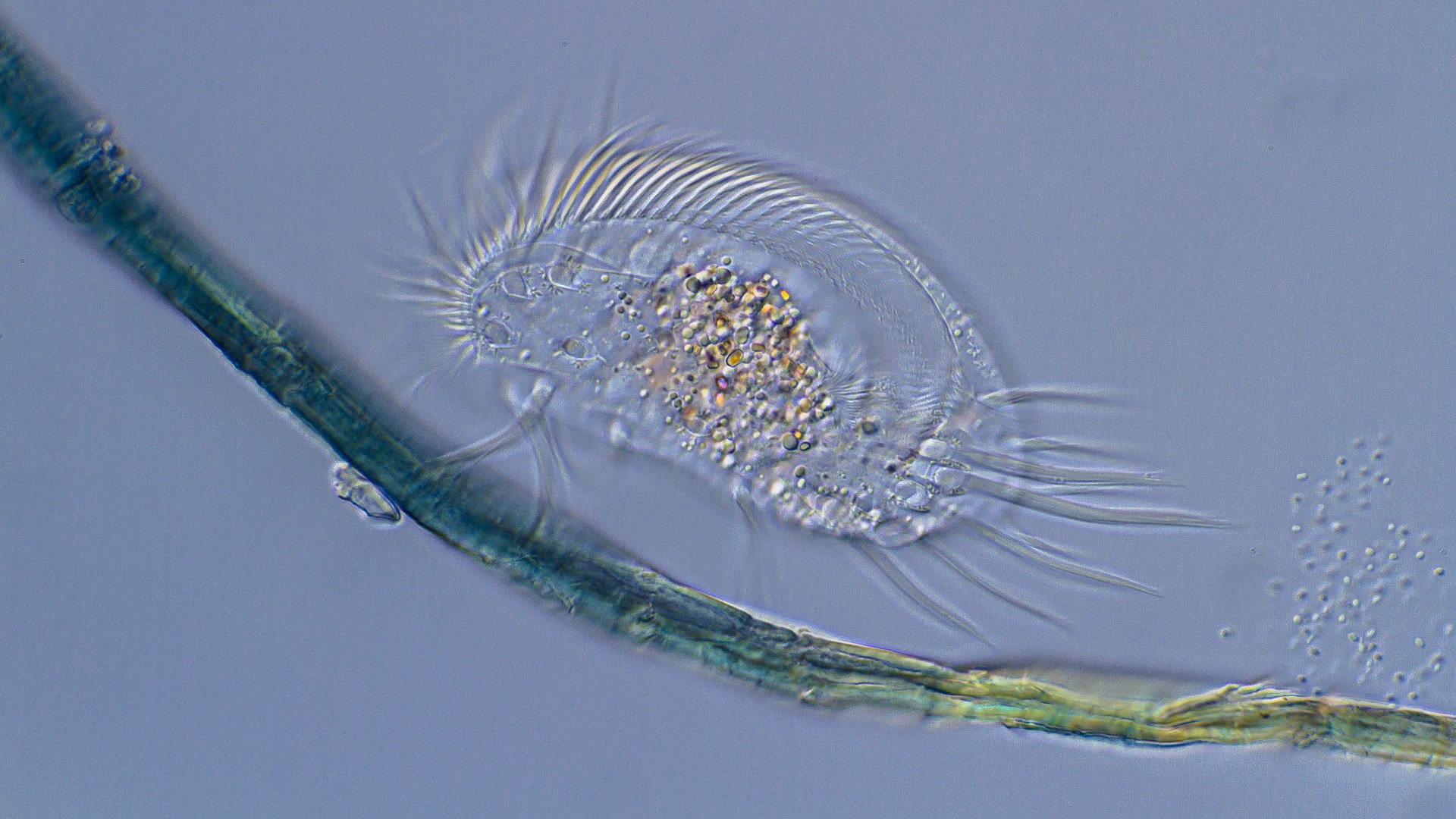Ciliates are single-celled organisms that move using short hair-like structures called cilia. These structures allow them to crawl, swim and eat. Ciliates live in humid environments, such as the pond in your backyard.
Ciliates are single-celled organisms that move using short hair-like structures called cilia. These structures allow them to crawl, swim and eat. Ciliates live in humid environments, such as the pond in your backyard.
Water
Ciliates live nearly anywhere as long as there is enough water. If the microbes get too much water, they can pump water from the cell with a contractile vacuole. Paramecia are an example of a ciliate organism in a water-rich environment. These Paramecia are slipper-shaped organisms who live in lakes and ditches. Some ciliates are parasitic, while others live in the ground.
Oral groove
Ciliates are covered in hair-like structures called cilia. These hairs are used mainly to move. Some types of organisms bundle their cilia into something that resembles legs, which they use to ‘walk’ over surfaces. Cilia are also used for eating. Many ciliates have a mouth-like structure called an oral groove. It is covered with cilia that push the food towards the food vacuole, where digestion takes place. As cilia are rather large single-cell organisms, they can eat smaller micro-organisms such as bacteria and micro-algae.
Symbiosis
The slipper-shaped Paramecium bursaria lives in symbiosis with certain micro-algae. This Paramecium swallows the algae, which continue to live inside the Paramecium. Both organisms benefit from this partnership. The Paramecium offers the algae protection, carbon dioxide and nutrients. Using photosynthesis, the algae produce oxygen and carbohydrates, which are also nutrients for the Paramecium.

